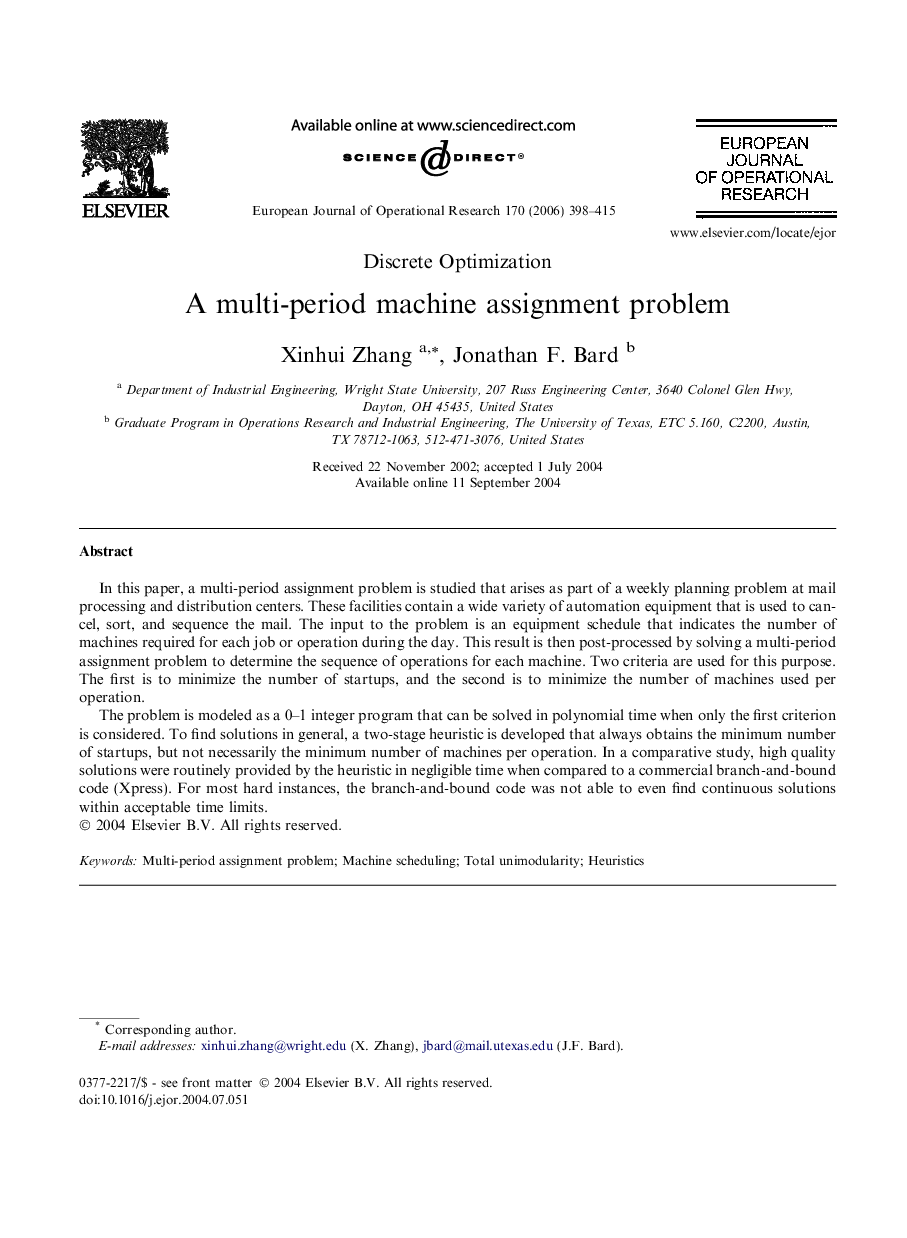| Article ID | Journal | Published Year | Pages | File Type |
|---|---|---|---|---|
| 482957 | European Journal of Operational Research | 2006 | 18 Pages |
In this paper, a multi-period assignment problem is studied that arises as part of a weekly planning problem at mail processing and distribution centers. These facilities contain a wide variety of automation equipment that is used to cancel, sort, and sequence the mail. The input to the problem is an equipment schedule that indicates the number of machines required for each job or operation during the day. This result is then post-processed by solving a multi-period assignment problem to determine the sequence of operations for each machine. Two criteria are used for this purpose. The first is to minimize the number of startups, and the second is to minimize the number of machines used per operation.The problem is modeled as a 0–1 integer program that can be solved in polynomial time when only the first criterion is considered. To find solutions in general, a two-stage heuristic is developed that always obtains the minimum number of startups, but not necessarily the minimum number of machines per operation. In a comparative study, high quality solutions were routinely provided by the heuristic in negligible time when compared to a commercial branch-and-bound code (Xpress). For most hard instances, the branch-and-bound code was not able to even find continuous solutions within acceptable time limits.
